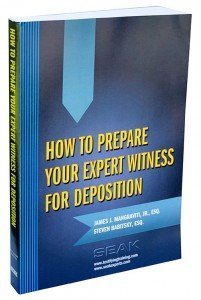Expert Witness Notes and Underlining
Experts are frequently questioned at length about notes, underlining, highlighting, and margin notes that appear in their files. Opposing counsel will focus like a laser beam on the expert’s notes because these may provide insight into what the expert felt was important.
Expert Witnesses generally handle notes and underlining in one of four ways:
1) Not taking any notes.
This may negatively affect the expert’s ability to work.
2) Taking notes and then “discarding” them when the report is written because they are no longer needed.
Aside from the legalities of not preserving evidence, this smacks of a cover-up. The cover-up allegations will likely do more damage to the expert and his opinions than whatever was in the notes.
3) Making notes on Post-its and then dishonestly removing them from the file and discarding them (or other gamesmanship).
Again, aside from the legalities, the expert is likely to eventually get caught doing this and thus suffer a sudden and ignominious end to his forensic career.
4) Preserving and producing notes and not hiding them.
The wise expert is transparent. Of course, the prudent expert is careful when taking notes not to write anything inflammatory or that may reflect poorly on the expert.
Of these four techniques, the authors strongly recommend #4. This is not just because it is the legal thing to do. It is also the most effective and wisest course of action. The most effective experts understand that transparency will usually help their credibility because the cover-up is usually worse than the crime.
Questions regarding notes should not be feared. These are often easily answered if the expert is well-prepared. Remember that the expert is being paid by the hour. If opposing counsel wants to spend time at deposition asking the expert why he underlined certain portions of records and what his handwritten notes mean, it’s his nickel.
Excerpted from the SEAK Text; How to Prepare Your Expert Witness for Deposition

